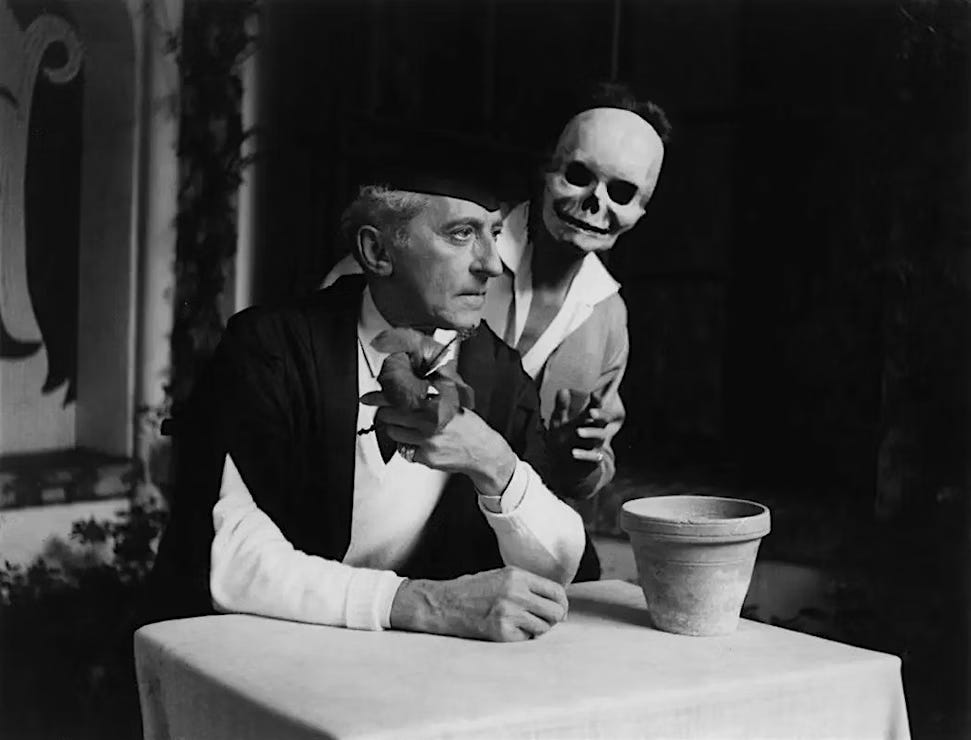The Final Word
Jean Cocteau wrote his own elegy with 1960's Le Testament d'Orphée.
I will be hosting a screening of Le Testament d’Orphée at the Philosophical Research Society this weekend, on Saturday, July 5th! Tickets are available here. This event is also a JEAN COCTEAU BIRTHDAY PARTY, with a performance by my friend Jean-Luc Eldenwood and the launch of Sacred Monster Vol. I, an essay collection that I am excited to tell you more about soon. All of the proceeds from this event are going towards buying PRS a new projector. If you can’t make it but want to contribute, you can make a donation here.
Many of us remember where we were in January of 2016, when that turbulent year kicked off with the news of David Bowie’s death. The Starman had left the terrestrial plane to perhaps return to a home planet in a galaxy far, far away. His parting gift was a final record titled Blackstar, which he had released only two days prior, on his 69th birthday. Fans quickly ascertained that much of Blackstar, including its lead single and video “Lazarus,” addressed what he knew was his impending death. While the whole album and its timing was characteristically Bowie in its ability to surprise, he wasn’t the first nor the last artist to release a self-written elegy. Jean Cocteau had done it in 1960, with his final film, Le Testament d’Orphée.
Cocteau had found a second, or perhaps even third, life as a celebrated film maker. Following the release of La Belle et La Bête in 1946, he became popular with audiences around the world. Audiences in Japan, Brazil, and the United States all embraced the original fairy tale-film and all of a sudden, Cocteau’s world bled outside of the borders of his native France. A new generation of young people started to flock to Cocteau, who by that point was an elder statesman and icon to them. No longer the young twerp begging for a shot to work with Serge Diaghilev or the effete outsider beefing with André Breton, Cocteau’s film making in particular was what solidified him as a cultural touchstone.
La Belle et La Bête premiered at the very first Cannes Film Festival; by the late 1950s, Cocteau had twice served as its jury president. In 1959, Cocteau, though not a jury member, rallied hard for a young film-maker named François Truffaut to win the Palme d’Or for The 400 Blows. To thank him, Truffaut gave his champion a large sum of the money he needed to make his final film.




